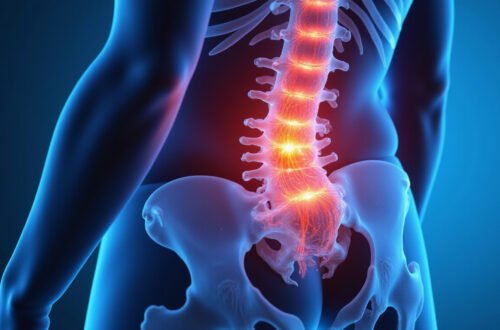Sciatica pain relief is a priority for the millions of people who suffer from this often debilitating condition. Characterized by sharp, shooting pain that radiates along the sciatic nerve—from the lower back through the hips and down each leg—sciatica can significantly impact your quality of life. Fortunately, there are several effective strategies to alleviate this discomfort quickly and promote long-term healing. This article explores the top methods for sciatica pain relief, empowering you to regain comfort and mobility.
What Causes Sciatica Pain?
To understand sciatica pain relief, it’s helpful to know what causes the pain in the first place. Sciatica commonly arises when the sciatic nerve, the longest nerve in the body, becomes compressed or irritated. This compression may result from:
- Herniated or slipped discs
- Spinal stenosis (narrowing of the spinal canal)
- Degenerative disc disease
- Piriformis syndrome (muscle spasms irritating the nerve)
- Injury or trauma to the spine
Recognizing the underlying cause is essential for selecting the appropriate pain relief strategy.
Immediate Sciatica Pain Relief Techniques
When sciatica pain flares up, finding rapid relief is important to maintain daily activities and reduce suffering. Here are some quick methods to try:
1. Apply Cold and Heat Therapy
Alternating cold and heat can effectively reduce inflammation and soothe muscle spasms. Use an ice pack wrapped in a cloth on the painful area for 15-20 minutes every two hours during the first 48 hours after pain onset. Follow with heat application, such as a warm compress or heating pad, to increase blood flow and relax tight muscles.
2. Take Over-the-Counter Pain Relievers
Nonsteroidal anti-inflammatory drugs (NSAIDs) like ibuprofen or naproxen can help reduce inflammation and provide pain relief. Always follow the recommended dosage and consult your healthcare provider if you have any medical conditions or are taking other medications.
3. Gentle Stretching
Stretching the lower back and hamstrings gently can relieve tension around the sciatic nerve. Avoid aggressive stretches and stop immediately if pain worsens.
Long-Term Sciatica Pain Relief Strategies
For sustainable relief and to prevent recurrence, consider integrating these habits into your routine:
1. Regular Exercise and Physical Therapy
Strengthening the muscles supporting your spine through low-impact exercises like walking, swimming, or yoga can stabilize your lower back and reduce nerve irritation. Physical therapists can design a personalized program with specific stretches and strengthening moves optimized for sciatica relief.
Maintain Proper Posture
Slouching or poor posture puts extra pressure on the lower back and can exacerbate sciatica pain. Use ergonomic chairs, keep your back straight, and avoid sitting for prolonged periods without breaks.
Weight Management
Excess body weight increases the load on your spine and contributes to nerve compression. Losing weight through a balanced diet and exercise can reduce sciatica symptoms significantly.
Consider Alternative Therapies
Acupuncture, chiropractic adjustments, and massage therapy may offer beneficial relief for some people with sciatica by improving circulation and easing nerve irritation.

When to See a Doctor
While most sciatica pain improves with conservative treatments, consult a healthcare professional if you experience:
- Severe or worsening pain that interferes with daily activities
- Numbness, weakness, or loss of bladder or bowel control
- Pain after a traumatic injury
Doctors may recommend imaging tests to identify the cause and explore treatments like prescription medications, epidural steroid injections, or in rare cases, surgery.
Top 5 Sciatica Pain Relief Tips: Summary
For quick reference, here are the five most effective strategies to alleviate sciatica discomfort fast:
- Apply ice packs initially, then switch to heat therapy.
- Use over-the-counter NSAIDs to manage inflammation.
- Perform gentle stretches targeting the lower back and legs.
- Maintain good posture and avoid prolonged sitting.
- Engage in regular exercise focused on spinal health.
Sciatica Pain Relief FAQ
Q1: How long does it take for sciatica pain relief to occur?
Sciatica pain relief timeline varies depending on the cause and treatment used. Mild cases often improve within a few weeks with home care, while severe cases may require months of therapy or medical intervention.
Q2: Can sciatica pain relief be achieved without medication?
Yes, many people find significant relief through physical therapy, stretching, posture correction, and alternative treatments without relying solely on medications.
Q3: What sciatica pain relief exercises are best?
Exercises like knee-to-chest stretches, piriformis stretches, and pelvic tilts are commonly recommended. Always perform them cautiously and consult a physical therapist for personalized guidance.
Expert Source
According to the Mayo Clinic, physical therapy and exercises combined with proper pain management are the cornerstone treatments for sciatica pain relief, helping most people recover without surgery (source).
If you’re struggling with persistent sciatica pain, don’t wait to take action. Incorporate these top strategies into your daily routine and consult healthcare professionals to tailor a plan that suits your needs. Prioritize your spinal health today and reclaim the pain-free movement you deserve!






